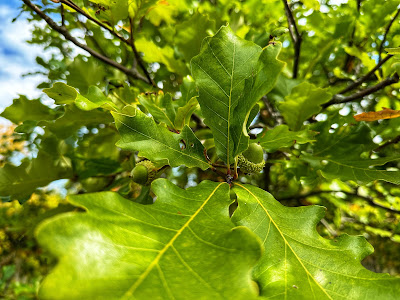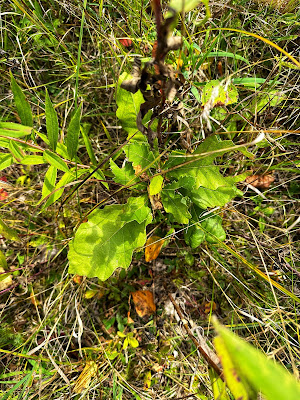From the Wisconsin Woodland Owners Association newsletter there is this:
In
Wisconsin, the white oak seem to be having a “mast year,” which occurs
every 2-5 years, with smaller acorn crops in between. Boom and bust
cycles of acorn production do have an evolutionary benefit for oak trees
through “predator satiation.” In a mast year, animals can’t eat all the
acorns, so they leave some nuts to grow into future oak trees. Years of
lean acorn production keep predator populations low, so there are fewer
animals to eat all the seeds in a mast year. A year of heavy acorn
production may use up much of a tree’s stored nitrogen, and few acorns
may be produced the following year while the tree’s nutrient stores are
replenished.
The importance of acorns as a
food source for wildlife is primarily related to their widespread
occurrence, palatability, nutritional value, and availability during the
fall and winter months, when they provide an excellent source of needed
energy. Historically they were a source of food for humans also,
however care must be taken to remove the tannins prior to consuming
them.
Oak trees take decades to mature and one
oak produces more than 2,000 acorns every year, but only one in 10,000
acorns will manage to develop into oak tree.
Pictured
are one of our swamp white oaks planted from two-year-old bare root
stock in 1998 and a seedling growing in a sunny spot in the forest
understory.






No comments:
Post a Comment